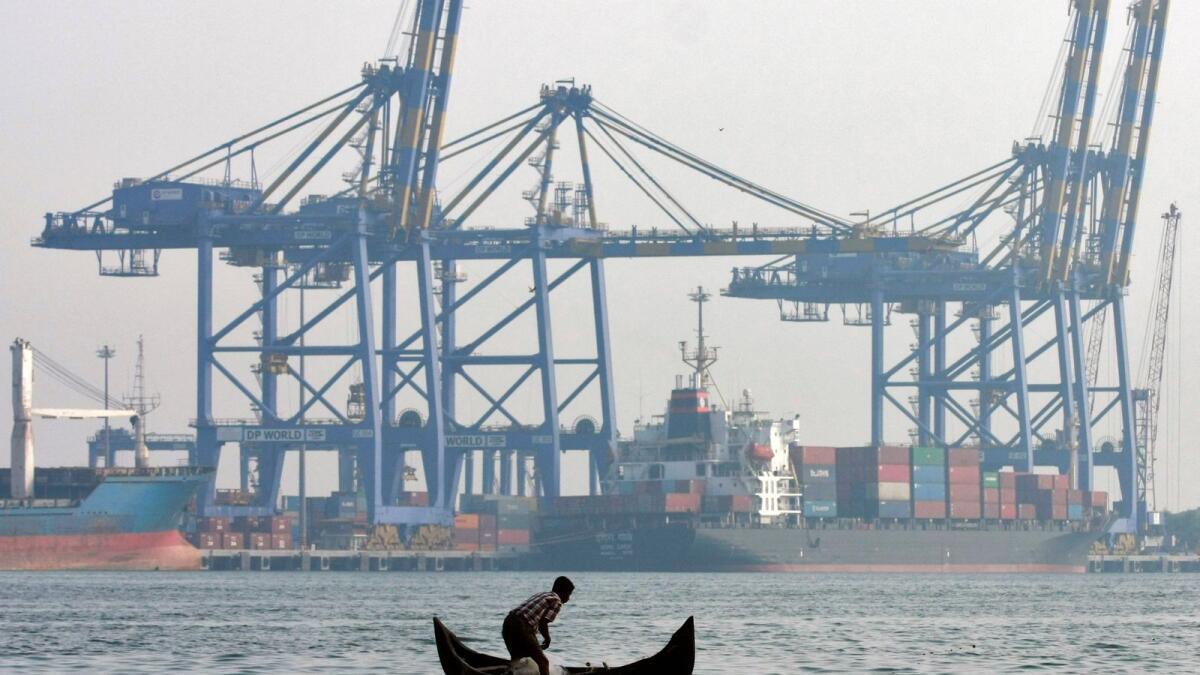Indian GDP Can Hit $55 Trillion By 2047 At 8% Growth: IMF
Krishnamurthy V Subramanian, executive director of the IMF, said with consistent eight per cent growth, the power of compounding could propel India to a $55 trillion economy, adding that while the goal may seem ambitious, it is achievable.
Addressing an event in Hyderabad, the IMF executive pointed out that in 2020, India's private credit to GDP ratio was 58 per cent, significantly lower than the 200 per cent seen in advanced economies. However, he highlighted the significant progress in financial inclusion through several initiatives.
Subramanian's upbeat growth projections came as Dr Gita Gopinath, the IMF deputy managing director said that she is hopeful of India becoming the third-largest economy by 2027.
Speaking to the media, Gopinath said India's growth did much better than expected during the last fiscal year and that those carryover effects are affecting our forecast for this year.“The other factor is we see private consumption recovering,” she said.
Her remarks come after the IMF, in its 'World Economic Outlook' report, increased India's growth projection for the financial year 2024-25 to seven per cent. The revised growth projection was based on new data for FMCG and two-wheeler sales and a favourable monsoon. Interestingly, this projection is more bullish than the 6.5 per cent projection of the Union government in the economic survey.
Gopinath said India needs to create an additional 60 to 148 million jobs by 2030 given its population growth while revamping its education to improve skills of its workforce. The country should implement labour codes, undertake land reforms, improve ease of doing business and the regulatory environment, and broaden the tax base, she said, identifying key thrust areas for moving ahead on the vision of becoming a developed nation by 2047.
“If you look at India's projections in terms of population growth, India will have to create anywhere between 60 million and 148 million additional jobs cumulatively between now and 2030...we are already in 2024 so in a short period of time we have to create a lot of jobs,” she said at the Diamond Jubilee Conference of Delhi School of Economics.
India on an average grew 6.6 per cent a year in the decade starting 2010, but the employment growth rate was below 2.0 per cent, which was below its G20 peers, she pointed out.

Legal Disclaimer:
MENAFN provides the
information “as is” without warranty of any kind. We do not accept
any responsibility or liability for the accuracy, content, images,
videos, licenses, completeness, legality, or reliability of the information
contained in this article. If you have any complaints or copyright
issues related to this article, kindly contact the provider above.
Most popular stories
Market Research

- Global Open Banking Market 20252033: Services, Deployment & Distribution Trends
- ROVR Releases Open Dataset To Power The Future Of Spatial AI, Robotics, And Autonomous Systems
- Cartesian Launches First Outsourced Middle-Back-Office Offering For Digital Asset Funds
- Nickel Market Estimated To Exceed USD 55.5 Billion By 2033
- Edgen And Sahara AI Announce Strategic Collaboration To Pioneer Decentralized Validation In Market Intelligence
- Excellion Finance Launches MAX Yield: A Multi-Chain, Actively Managed Defi Strategy






















Comments
No comment